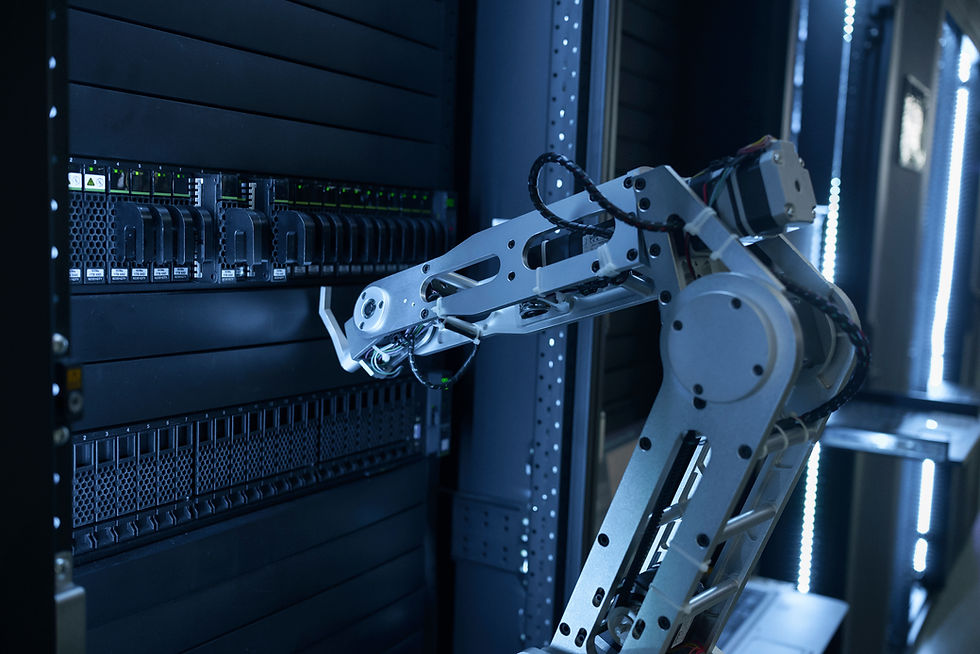
In the rapidly evolving landscape of industrial automation, collaborative robots (cobots) have emerged as invaluable assets, seamlessly integrating into diverse work environments to augment human capabilities. At the core of this symbiotic relationship lies cobot programming—a discipline that not only drives technological innovation but also emphasizes the importance of human-centric design and interaction. In this blog post, we explore the pivotal role of the human touch in cobot programming, its impact on collaboration, efficiency, and the future of work.
Embracing Human-Centric Design
Cobot programming is more than just writing code—it's about understanding human needs and behaviors to design robots that work alongside humans effectively and safely. Human-centric design principles ensure that cobots are intuitive to operate, responsive to human commands, and capable of adapting to dynamic work environments. By prioritizing usability and user experience (UX), cobot programmers enhance workplace efficiency while fostering a positive interaction between humans and machines.
Fostering Collaboration in the Workplace
Cobots programmed with a human-centric approach facilitate seamless collaboration between humans and machines across various industries:
Manufacturing: Cobots programmed to assist in assembly tasks work alongside human workers, enhancing productivity and reducing ergonomic strain.
Healthcare: In hospitals, cobots programmed for patient care tasks collaborate with healthcare professionals, improving efficiency in medical logistics and support services.
Retail: Cobots programmed for inventory management and customer service tasks assist retail employees, optimizing operational workflows and enhancing customer satisfaction.
Enhancing Efficiency Through Intuitive Interfaces
The evolution of cobot programming has led to the development of intuitive user interfaces (UI) that simplify operation and enhance user engagement:
Natural Language Processing: Cobots equipped with NLP capabilities understand and respond to verbal commands, facilitating seamless interaction with human operators.
Gesture Recognition: Advanced cobot programming enables robots to interpret human gestures, improving communication and collaboration on the factory floor or in customer-facing environments.
Adaptive Learning: Cobots programmed with adaptive learning algorithms continuously improve their performance based on feedback from human operators, optimizing efficiency and task execution over time.
The Future of Human-Robot Collaboration
Looking ahead, the future of cobot programming will continue to emphasize the integration of advanced technologies and human-centric design principles:
Augmented Reality (AR) and Virtual Reality (VR): Integration of AR/VR technologies will enable immersive training experiences and real-time visualization of cobot operations, enhancing learning and operational efficiency.
Ethical Considerations: As cobots become more integrated into daily workflows, addressing ethical concerns around job displacement, privacy, and safety will be crucial.
Skill Enhancement: Cobot programming will empower workers to acquire new skills and specialize in tasks that complement cobot capabilities, fostering a more adaptable and skilled workforce.
Conclusion
In conclusion, cobot programming is not just about technological advancement—it's about harnessing the power of automation to empower human workers, enhance collaboration, and drive operational efficiency. By embracing human-centric design principles and integrating advanced technologies, businesses can unlock the full potential of cobots to transform industries and create safer, more productive work environments.
At Aquabrain Technologies, we're committed to pushing the boundaries of cobot programming and human-robot collaboration. Contact us today to explore how our innovative solutions can empower your business to thrive in the era of intelligent automation.
Join the conversation: How has human-centric cobot programming impacted your industry? Share your thoughts and experiences in the comments below!
.png)
Comments